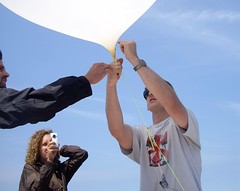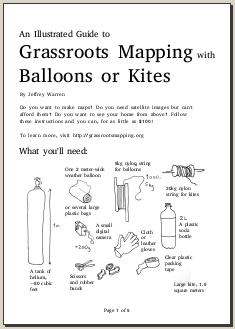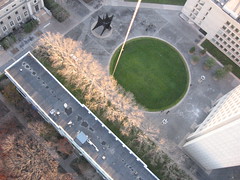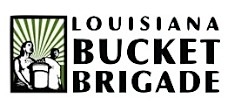January 24th, 2011 by Cesar Harada

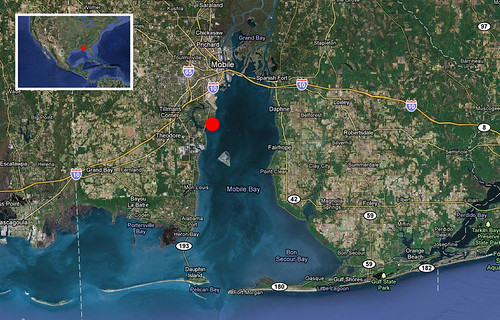
Yesterday we went aerial mapping a landscape that is just about to change radically : restoration of the oyster reef in Mobile Alabama, Dog river mouth – known as Helen Wood Park beach. In two hours from now (2011 January 22 6AM), hundreds of volunteers will come to install a massive oyster reef here. From 8AM today “Volunteers will be deploying approximately 23,000 bags of oyster shells to create new reefs and habitat at the mouth of Dog River” – see them in action here .
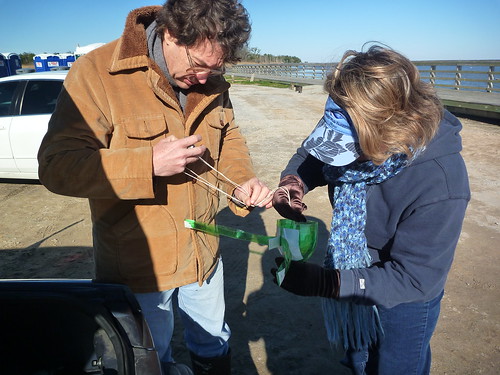
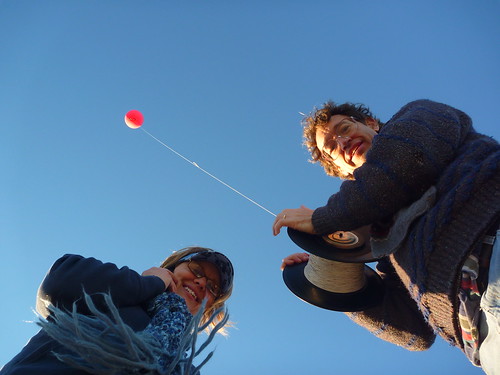
Aerial mapping Prof. Dawn McKinney & Prof. Leo Denton of the University of Mobile South Alabama. Thanks to Shannon Dosemagen for organizing the trip.
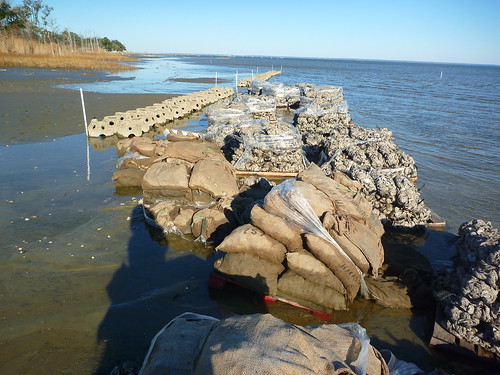
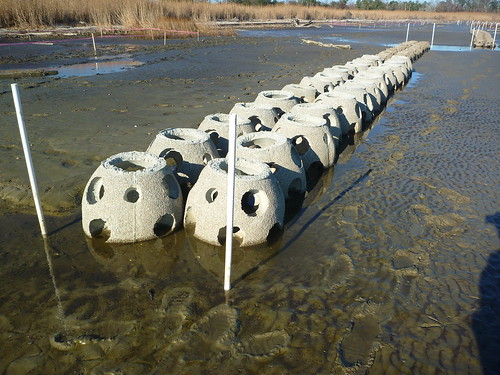
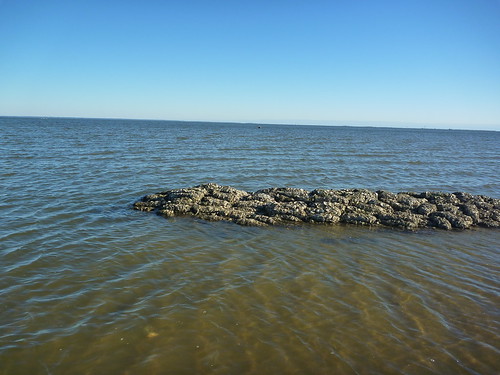
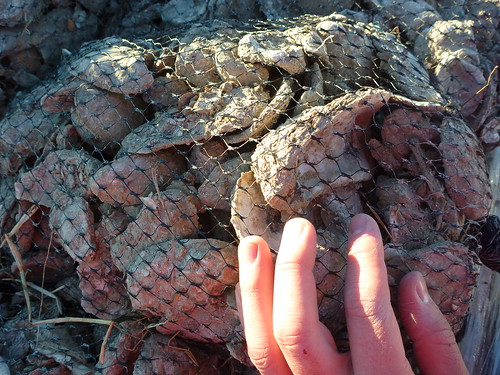
These are the different reefs and bags of oyster they are installing. 5 non-profit organizations are working together to accomplish this massive landscaping project.
We took about 5000 aerial pictures that I turned into 3 very large resolution maps to make one huge map (at the top of the post):
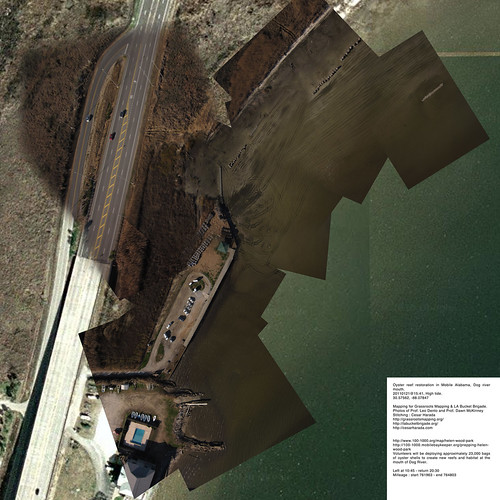
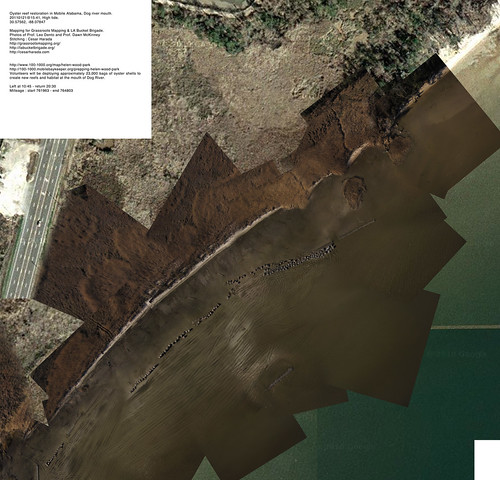

Download these full resolution maps to your computer as .zip file (27mb). If you want to learn how to make one of these map, check this post.

This time, in addition of aerial photography, I also took ground samples (~250x microscopy), sand, sediment, organic material taken at regular interval. The idea is : if we are able to say what is on the ground – sometimes we may find oil spilled still – we can qualify and quantify what we see on the aerial pictures. We will come back in a few weeks to map again and see the effects of installing an artificial oyster reef here : “before and after” 🙂















—
Original blog post : http://cesarharada.posterous.com/mapping-river-dog-mouth-mobile-alabama
date : 20110121@15:41, low-tide.
Location : 30.57562, -88.07847
Mapping for Grassroots Mapping & LA Bucket Brigade.
Photos : Prof. Leo Denton and Prof. Dawn McKinney
Stitching : Cesar Harada
Left at 10:45 – return 20:30
Milleage : start 761963 – end 764803
Tags: Aerial, Alabama, Balloon, Bottle, Cesar, Dawn, Denton, DIY, Dosemagen, GM, Harada, Jeff, Leo, mapping, McKinney, mobile, Photo, Photography, Prof, Shannon, Soda, South, University, Warren, Yoo
Posted in Blog, syndicated | No Comments »
January 10th, 2011 by Cesar Harada

This post was written by Christopher Johnson, a student at South Alabama University that participated in the Grassroots Mapping project in Alabama.
Hello! My name is Christopher Johnson, and I was one of the University of South Alabama (USA) students to participate in the Grassroots Mapping project in Professor Dawn McKinney‘s Computer Science class. It was a bit weird to go outside and do a project, since our majors are all computer-related, but I think in the long run the class was better for it.
Basically we were broken into teams of around six, each team having at least two of each major: CS, IT, and IS (not our actual majors; we were assigned a major for each third of the course, which we rotated). We had to work in teams to stitch together parts of Dauphin Island using Cartagen, among a few other things essential to the Freshman course.
Most of the technical problems came with Cartagen being down for a short period and unusable pictures – the nice sea breeze can be a difficult adversary. Another difficulty was overcoming the challenges we created ourselves, such as arguments within the group and people not showing up for class.
Overall it was a very good learning experience; I was one of those who went to Dauphin Island (taking the pictures was optional), and we had a lot of fun. I’d definitely do it again, given the opportunity, and I recommend that everybody go out there and try to make a difference. It’s more fun than you think, and you can really make a difference in your community!
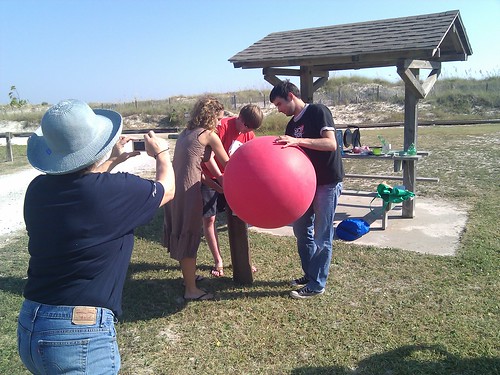
Tags: Alabama, Balloon, BP, Cesar, Dauphin, Dawn, Dosemagen, gulf, Harada, helium, Island, LABB, Oil-Spill, Shannon, South
Posted in Blog | No Comments »
December 12th, 2010 by Rachel Phipps
Mission
A group of students attending Western Carolina University, under the guidance of Adam Griffith, took on the project of mapping the campus using aerial photography in the fall of 2010. The project was initiated because there was concern about the Google Earth images that covered the campus and the surrounding Cullowhee area. Satellites for Google Earth images only pass by every couple weeks and our campus is experiencing lots of change through construction of new buildings and new facilities that Google Earth does not reflect. Also, the images are of extremely poor quality, and unless you are familiar with the campus it is difficult to discern cars and some buildings and small structures.. This is where we come in: our images taken only 1000 feet in the air are of much better quality and clarity than those in Google Earth, and when we complete the project we would love for Google to insert our images into their maps.


Process
The photographs were taken by suspending a camera inside the top of a 2 liter soda bottle and attaching this setup to a 250 gram balloon which was on 1000 feet of string (see materials picture d). We also used the same soda bottle-camera rigging attached to a kite to test which produced better photos (balloon). The balloon was pulled by hand by students on the ground and was navigated around campus, making sure to steer clear of tall buildings, trees, and other high objects that could snag the string. The camera was 14 megapixels and was set on continuous mode so it would take about a picture per second while up in the air. After several flights, we discovered what conditions were most suitable to our endeavor. The best photos were taken when the sun was out with no clouds in the sky. Lights winds were fine, but heavier winds caused the balloon to be jerked around, which would not allow the camera to focus. Advice for other mappers would be that no matter what equipment you use to take your aerial photos, make sure it is sturdy enough to withstand a fall! We experienced a malfunction where the balloon burst while we were pulling it in, and the camera struck pavement roughly. Luckily it survived with little to no damage.
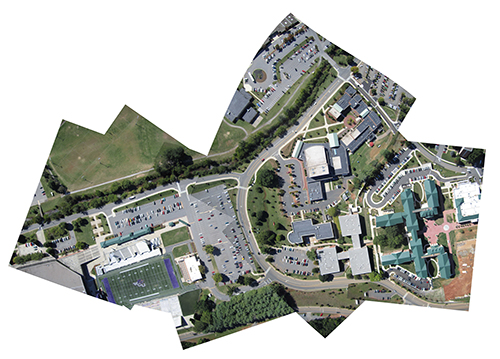
Stitching
When first reviewing the outline of the project, stitching the photos together to form the map seemed like a simple enough task. We found out otherwise. The photos chosen had to be almost completely straight down and in focus on the area being photographed in order for them to be properly stitched together to fit Google Earth. Because the camera was in so much motion while in the air, there were very few pictures that turned out to be completely straight down. Due to this fact, we had to warp several photos when they were stitched and manually force them to mirror Google Earth. Stitching these photos turned out to be the most difficult and time consuming task for the whole project. However, our end product was such an improvement over Google Earth that the effort was worth it. Our photos had about 7cm resolution or 7 cm per pixel, which is a vast difference from Google Earth.
Tags: Adam, Balloon, camera, Carolina, Griffith, helium, University, Western
Posted in Blog, syndicated | 2 Comments »


































